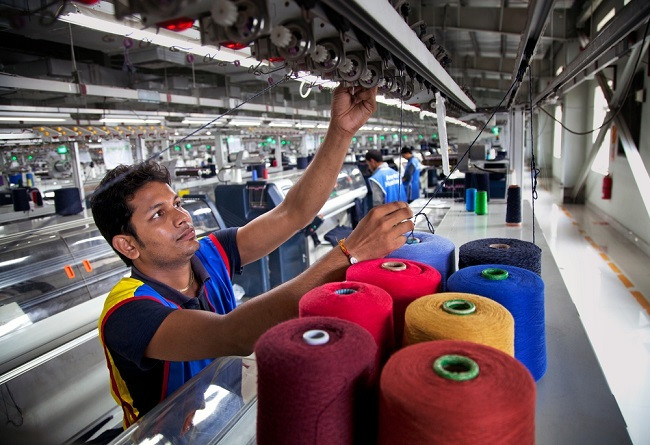Apparel production is being disrupted and cost of production is increasing due to electricity-gas and dollar crisis. On top of that, if the United States and the European Union turn away from the garment products produced in Bangladesh, this industrial sector will fall into a great crisis.
The United States has reduced garment imports in the last 4 months. On the other hand, the European Union has already announced that “GSP Plus” benefits will be given if there is a fair and acceptable election in Bangladesh; if not, think otherwise. Garment industry owners are worried about these ‘two big markets’ for garment products.

Figure: Apparel production is being disrupted and cost of production is increasing due to electricity-gas and dollar crisis.
Expenditure on foreign services and transportation and repayment of foreign loans leave a huge shortfall in dollar income and expenditure every month. Again, the export earnings are not coming to the country on time, which intensifying the dollar crisis.
Meanwhile, Bangladesh Bank has stopped giving dollars to many entrepreneurs in the garment sector from the Export Development Fund (EDF) due to non-arrival of export earnings timely. In this, EDF’s $7 billion of funds fell to $4.49 billion. As a result, the benefits are getting narrowed day by day.
U.S. retailers and brands have cut imports of foreign-made clothing by nearly a quarter this year. Exports of manufactured garments by top exporting countries such as China, Vietnam, Bangladesh, India and Indonesia have also declined in this market. But India and China do not have the dependence that Bangladesh has on garment exports. As a result, India or China will not have any problem even if the United States reduces the import of clothing, but Bangladesh may fall into extreme crisis.
According to the data of the United States Office of Textiles and Apparel (OTEXA), Bangladesh exports have decreased by 17.88 percent in January-April comparing to the same perid last year. At this time, Bangladesh exported $3.28 billion worth of goods to the US last year, but this year it was $2.7 billion.
According to the Bangladesh Garment Manufacturers and Exporters Association (BGMEA), garment exports to the United States fell by 19 percent in value terms and 30 percent in volume terms in the first quarter of this year.
However, the decline in apparel exports to the US appears to be normal so far, according to stakeholders. Because they are still spending less than usual in clothing sector. In June last year, the country’s inflation was 9.1 percent, the highest in 40 years. As a result, the consumers of the country reduce the purchase of products other than daily commodities and fuel. Although the country’s inflation is coming down. However, since last year, inflation in the United States has almost halved, but Bangladesh has not been able to take advantage of that.
Due to the decrease in demand, the export to the United States has decreased, but the question is, if the demand increases, will Bangladesh be able to increase the export? How to solve the big problems that have arisen in product production has emerged as a big question.
Power outages, gas shortages, dollar shortages in banks—Bangladesh’s industrial sector is probably going through a tough time right now. There is a problem in importing coal or liquefied gas due to dollar crisis. Currently, the price of gas and electricity has also increased a lot.
From July to April, imports of capital equipment fell by 56 percent and the import of raw materials decreased by 29 percent. Imports of these two important components of production have decreased mainly due to the dollar-crisis.
In this situation, the apparel industry will need a lot of policy support to stay competitive. Existing issues like ‘supply side’ bottlenecks, difficulties in import of coal or liquefied gas due to dollar-crisis, simplification of NBR and customs procedures etc. need to be addressed urgently. If policy support is not assured, the pressure on the apparel industry will increase further.
















